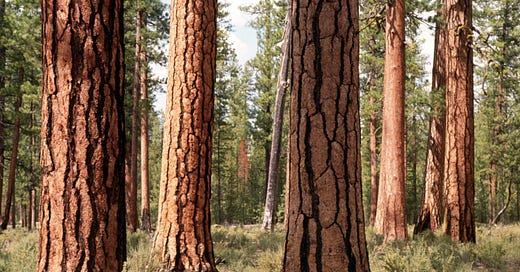One Thousand Years Ago, 500, 200
Welcome to a thousand years ago. The year is 1023 by our Gregorian calendars. Europe is slowly pulling itself out of the Dark Ages, Danes are battling the English for land and power, and China is beginning to print paper money.
Standing in the foothills of Colorado, did the landscape look the same? As we established in the previous post, landforms change all the time, but the movement is imperceptibly slow in the pace of millennia. Inches of uplift and erosion are possible, but in general Lone Rock was still standing, as were the granite towers at Staunton State Park, Sphynx Park, Three Sisters, and so many other formations that shape the landscape today as it did then. Surely, many pillars and balanced rocks have toppled from where they stood, and the huge boulders found in many creeks and along the hiking trails give hints of where they once stood. What a sight that must have been to see a balanced boulder, the size of a small cabin, finally to reach its erosion point that it gives way, crashing down through mature trees and other rock formations to come to rest at the valley floor, usually a creek.
To get our view correct, though, we need to remove a great deal. Erase Hwy 285, and all the side roads, highway bridges, cars, trucks, trains, graded gravel roads, parking lots, power lines, fences, buildings, houses, and tens of thousands of ‘No Trespassing’ signs. Remove all the wells and septic tanks, all the buried phone lines, and underground pipes. Remove dams and reservoirs, all water flow controls, mining shafts, and even the remote cabins in the high passes. All the infrastructure that our modern life requires is not there. There is no county office of land records, and no taxes paid.
The forest is there, but this version of the forest is quite different. The Ponderosa Pines are here, but they are 2-3 times larger, trunks 6 feet wide, old-growth forest, with trees up to 800 to 1,000 years old mixed in with varied age growth. The trees were likely spaced somewhat further apart with evidence of periodic low-level fires that cleaned out the undergrowth and forest floor litter leaving behind nitrogen and nutrient-rich ash to feed the new generations of growth. (These trees were largely all cut down when logging moved through the foothills from the 1880s through the 1920s. With some exceptions, the trees we have today are no more than 100-150 years old, called a ‘Century Forest’ or second-generation forest.)

Waters flowed from the peaks of melting snow down to join with larger creeks and rivers running eastward down from the Continental divide to meet the Platte River then on to ever larger rivers, like the Mississippi, and out to the Gulf of Mexico. But none of those names were in place. Still the waters flowed, rain and snow fell, ice spread, and there were spring thaws, gushing creeks, and glorious summers, much like today. You might want a jacket if you step back a thousand years ago also. Average temperatures were significantly cooler.
The animals thrive. Bison roamed by the millions on the wide plains, as did deer, elk, and moose in the mountains. Apex predators of wolves, mountain lions, bears, coyotes, and raptors kept populations in check. Critters, birds, and insects were at their highest populations sustainable. Keeping balances of who eats what or who in mutual survival. These population numbers are unheard of today as many of these species’ numbers have dropped by a third, half, or even 80 or 90%. This applies to insect life as well. Because the chemicals were not there, no pollution, exhaust, or mine tailings. The Apex predators might have succumbed at times to each other, but they were not hunted in mass and populations remained steady. There was no systematic eradication of a species such has happened to wolves, coyotes, raptors, and other labeled ‘problem’ animals as has been in the past 170 years.
And what of man? Wasn’t man present here a thousand years ago? Yes - Paleolithic to Neolithic to Indigenous humans moved through and settled throughout the area. It was a good choice. Water, moderate climate, hunting, fishing, and edible and useful plants all made for near-ideal living conditions. Much of their early histories are scant details of tools, pottery, and spear points found, but the record becomes more clear as we get to 500 years ago when the Ute arrived in Colorado and the Cheyenne a hundred years or so after that. Here in the Southern Foothills, the Ute and Cheyenne moved back and forth like slow-moving weather fronts of who was on which land area and when. Their impact was generally light, living within their long knowledge of the land, knowing what plants were edible, medicinal, and functional for other uses.
By the 1700s Spanish explorers entered the area with horses, metal armor, muskets, and disease. Some of the first indigenous peoples they encountered were put to slave labor, and other tribes learned the commerce of trade and began to obtain horses and muskets for their own use and defense. Horses soon became an integral part of life in Colorado. As the West opened up, French Fur Trappers entered the commerce arena with animal pelts that seemed in endless supply and high demand. Emotions and conflict swelled with the mix of people and new ways of living. Laying claim to land, and taking more than can be sustained.
We will leave it here at 200 years ago to take one last look at the clean air, huge trees, thriving animal life, clear rushing waters, and beautiful vistas. Of course, everyone wanted a piece of it.




